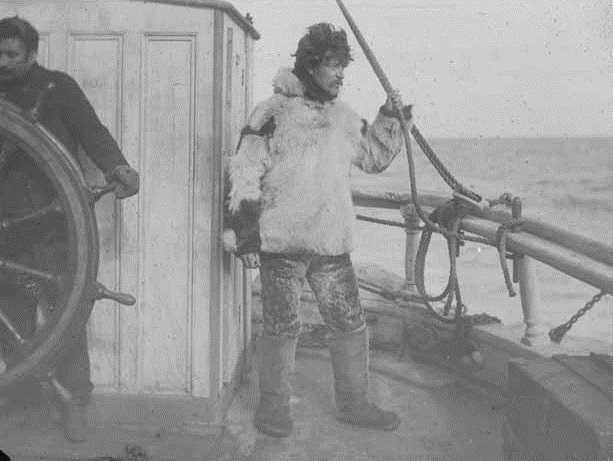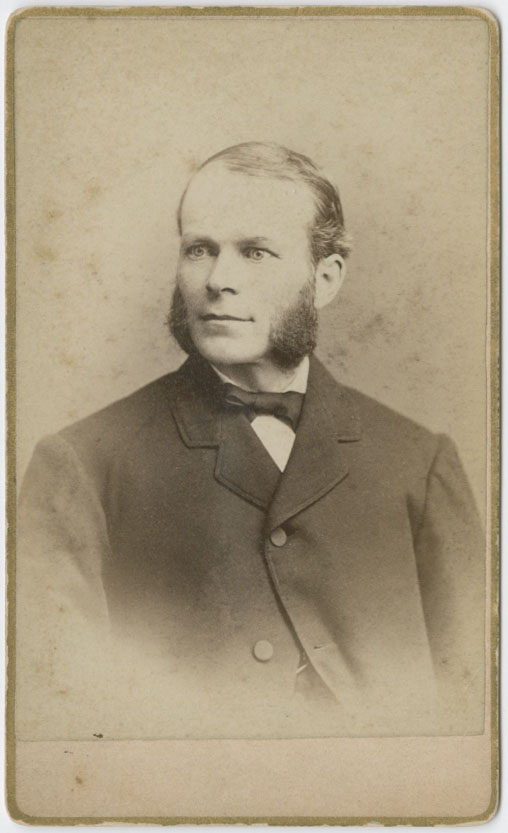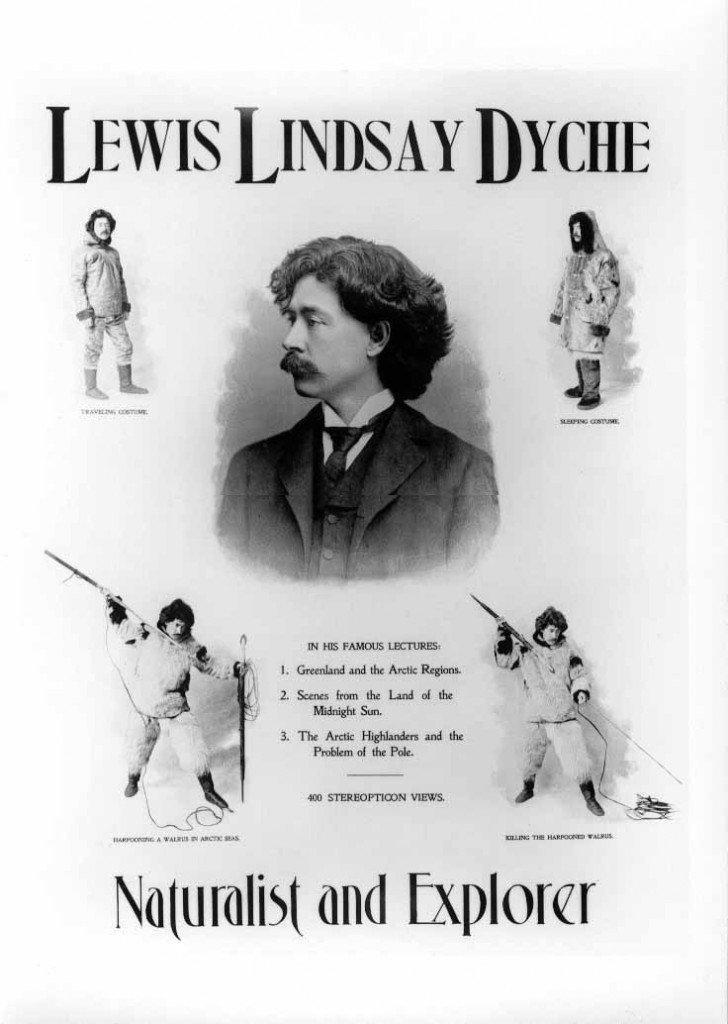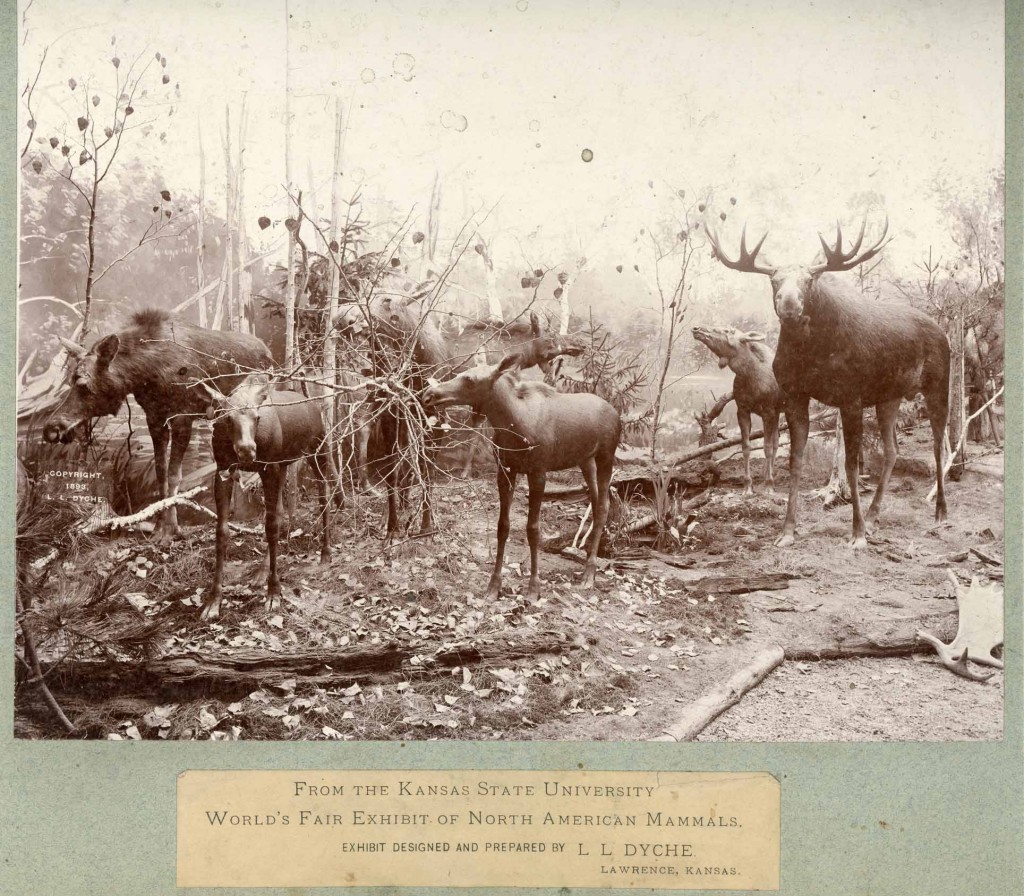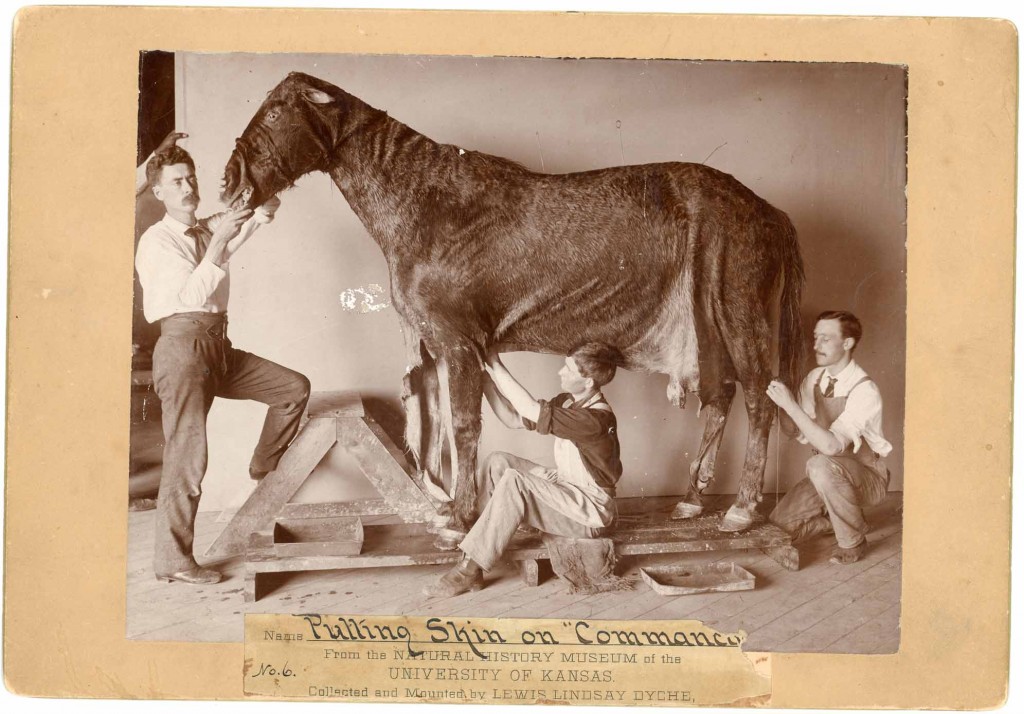Happy (Belated) Birthday, Lewis Lindsay Dyche!
Lewis Lindsay Dyche, noted naturalist, explorer, lecturer, professor and taxidermist, was born on March 20, 1857, in the Blue Ridge Mountains of Virginia. In the history of the University of Kansas there have been many faculty members who led interesting and adventurous lives and made valuable contributions both to academia as a whole and to the University in particular, but perhaps none more so than Dyche.
Lewis Lindsay Dyche in hunting attire, shown in a lantern slide taken on his trip to
Alaska and Greenland, 1894. University Archives Photos. Call Number: RG 41/0:
Faculty and Staff: Dyche, Lewis Lindsay (Photos). Click image to enlarge.
While still just an infant, Dyche’s parents moved west and settled in Kansas. At that time, Kansas had just been opened for settlement. It is said that women from a Sac and Fox tribe cared for him while his mother recovered from an illness she acquired while on the journey west. Growing up on the prairie allowed Dyche the opportunity to explore and roam, fish, and hunt. He also began to collect specimens and developed a desire to learn about the creatures inhabiting the world around him. This lead to a love of nature and a thirst for knowledge about the animal kingdom that would stay with him throughout his life.
Dyche stopped attending formal school when he was just thirteen. He was able to earn money by selling game and furs and raising cattle. In 1874, at the age of 17, he decided to use the money he had saved to get a formal education and enrolled in the Kansas State Normal School in Emporia. During his time there, he met Francis Huntington Snow, a faculty member at the University of Kansas. Professor Snow impressed Dyche with his knowledge of and enthusiasm for natural history, and after graduation Dyche, then twenty, followed Snow to the University. Dyche would go on to graduate and acquire multiple degrees. In 1882 he joined the faculty, and during his tenure he taught courses in natural history, anatomy and physiology, taxidermy, and zoology.
Francis Snow, undated. University Archives Photos.
Call Number: RG 2/6 Undated Prints: Chancellors:
Francis Snow (Photos). Click image to enlarge.
The relationship between Dyche and Snow was one of mutual admiration. Snow realized that Dyche was extremely intelligent and that they had much in common. He saw great potential in Dyche and became a mentor to him. Together they went on several collecting trips, venturing out west to gather specimens of mammals, fish and birds for the University’s teaching collections.
Poster from Lewis Lindsay Dyche speaking tour, undated.
University Archives Photos. Call Number: RG 41/0: Faculty and Staff:
Dyche, Lewis Lindsay (Photos). Click image to enlarge.
Dyche would go on to arrange many such collecting trips, including treks to Alaska and Greenland. On each trip he carried a list of specimens he would look for, filling in the gaps in the University’s collection as he went. To become a better taxidermist, Dyche went to New York to be trained by William T. Hornaday, chief taxidermist for the National Museum at the Smithsonian Institution. In 1893, with Dyche leading the way, the specimen collection was arranged into a diorama and put on display at Chicago’s Columbian Exposition. The diorama would become the foundation of the Dyche Museum of Natural History, known today as the KU Biodiversity Institute and Natural History Museum, one of the most visited sites in the state to this day.
Moose section of the diorama prepared by Lewis Lindsay Dyche,
“World’s Fair Exhibit of North American Mammals,” 1893. KU was known as
Kansas State University early in its history. University Archives Photos.
Call Number: RG 33/0: Museum of Natural History (Photos).
Click image to enlarge.
The horse Comanche survived the Battle of Little Bighorn in 1876.
After his death, Lewis Lindsay Dyche taxidermied the horse for the 7th Calvary,
but Comanche stayed with the museum’s collections. The photo here shows
Dyche and his crew working on Comanche in 1891. University Archives Photos.
Call Number: RG 33/0: Museum of Natural History (Photos). Click image to enlarge.
Dyche became the State Fish and Game Warden in 1910. As his career progressed, he had become more and more a proponent for the preservation of endangered species and spoke out for the need of soil and water conservation. He wrote the legislation for the creation of laws to protect species and set hunting and fishing limitations. Today the Dyche Museum of Natural History stands as a testament to his life’s work and his dedication to education and conservation.
Kathy Lafferty
Public Services
Tags: Chicago World's Fair, Comanche, Francis H. Snow, Kathy Lafferty, KU History, KU Natural History Museum, Lewis Lindsay Dyche, photographs, University Archives, University history, University of Kansas, World's Columbian Exposition

